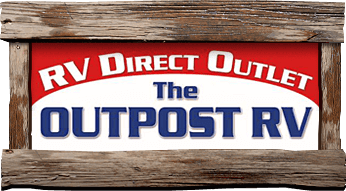Beginner's Guide To RV Holding Tanks
 RVs are crafted to fit your needs and satisfy your traveling and camping experiences by having impressive features and basic amenities. To ensure a long-lasting RV, it is necessary to properly maintain each component. One of the most important and least glamorous things to do is maintaining and emptying your holding tanks to avoid running into very unpleasant situations during your adventure.
RVs are crafted to fit your needs and satisfy your traveling and camping experiences by having impressive features and basic amenities. To ensure a long-lasting RV, it is necessary to properly maintain each component. One of the most important and least glamorous things to do is maintaining and emptying your holding tanks to avoid running into very unpleasant situations during your adventure.
Here is a guide to help you familiarize yourself with this process to make sure everything runs nice and clean. The Outpost RV is your local RV dealer in Middlebury, IN. If you have any questions or want to view some RV models, don’t hesitate to visit us.
Types Of Holding Tanks
RV models usually come with three holding tanks which contain fresh water, greywater, and blackwater tanks. The greywater tank holds used water from your shower and kitchen sink, and the blackwater tank holds water coming from the toilet. Some RV models only have fresh water and blackwater tanks in which the blackwater tank holds all used water and waste.
When Should You Empty The Holding Tanks?
When to empty your RV tanks depends on how often the RV is used. There is no set rule on when to do so. The number of people traveling with you can be used as a factor to determine how often you should empty them. If it is a large number of people, then you may want to deal with it every other day. However, if it is just one or two people, then you can do it once a week. To create a better flow when dumping, it is recommended to empty the tank when it’s about two-thirds full.
We must mention that some RV models come with a gauge that shows how full the tanks are. You can use this as a guide, but we must advise you that the sensors can fail to provide an accurate reading due to paper or other waste materials sticking to them.
How To Empty The Holding Tanks
First, be sure to have on some gloves, then proceed in identifying the valves which are marked “black” and “grey.” Start by emptying the black water tank, then proceed in emptying the grey water tank to flush out. Screw your sewer hose to the valve and make sure the other end is well secured to the dumpsite you are using. Be sure that both ends of the sewer hose are tightened. Pull the valve and let the tank drain. When you can no longer hear any liquid draining out, ensure the valve is closed completely. Then unscrew the hose from the valve and roll up the sewer hose. Don’t forget to sanitize your equipment, as well as your hands, after you’re done.
We hope this guide was helpful! If you would like to view some RV models for sale, visit us at The Outpost RV in Middlebury, IN. We look forward to helping you in finding the perfect one for you. We serve those from Kalamazoo, MI, too!

